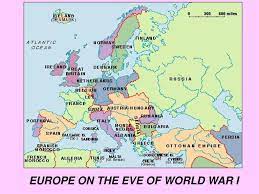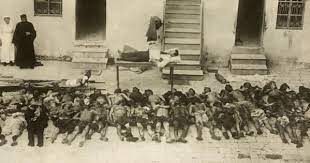We can write this or a similar paper for you! Simply fill the order form!
Shareholder Value Creation
ORDER INSTRUCTIONS
- Case 5: Genzyme and related investors:
Objective of this case
- The case focuses on corporate governance issues by discussing how the objectives of a large activist shareholder can potentially conflict with the core vision of the target company’s management.
- Learning how capital investment and payout policy decisions can affect shareholder value creation.
- The case offers an opportunity for discussion on how board composition and executive compensation may help align management with shareholders’ interests in a public company.
- Please listen to the video first: http://youtu.be/6LF_CB7Pa3U
Shareholder Value Creation
Summary of case 5
Genzyme reached record revenues of $4.6 billion in 2008 and was expected to generate an increasing level of free cash flow in coming years. But operational problems in one manufacturing plant had led to a warning letter in late February 2009 from the U.S. Food and Drug Administration (FDA), which, combined with news on impending health care reform, had pushed Genzyme’s stock price from a high of $70.42 down to a low of $56.38.
Genzyme was being targeted by Relational Investors (RI), an “activist” investment fund that had a 2.6% stake in the company at the end of March 2009. RI had a history of engagements with the boards of numerous companies that, in several instances, resulted in the CEO’s forced resignation.
Ralph Whitworth, RI cofounder and principal, met with Termeer and delivered a presentation, arguing that Genzyme was trading at a discount.
He offered recommendations on how Genzyme could address this:
(1) improve capital allocation decisions;
(2) implement a share-buyback or dividend program;
(3) improve board composition by adding more members with financial expertise; and
(4) focus executive compensation on performance metrics.
Shareholder Value Creation
Table 1
| Data in Case: | ||
| What’s a biotech company? | Rare diseases/genetic disorders/small populations FDA approval (expensive/slow/low probability) | Case pgs. 2–3 |
| How do you succeed? | Orphan drug (seven-year exclusive) Intensive R&D/strong pipeline | Case pgs. 2–3 Case Exhibit 4 |
| Genzyme’s business model | Diversified: segments (GD-CR-BI-HO) GD CR BI HO Other % revenues 53% 22.8% 10.6% 2.4% 11.1% CFROI 25.8% 8.8% Acquisitions ($ million 97–07) 12 1,943 942 2,081 596 Free cash flows (funding acquisitions): expected to grow | Case Exhibit 7 Case Exhibit 8 Case Exhibit 6 Case Exhibit 13 |
| Genzyme’s financial strategy | No dividends and open-market repurchases (some competitors do!) No debt | Case p. 6 Case Exhibits 1 and 4 |
GENZYME AND RELATIONAL INVESTORS:
SCIENCE AND BUSINESS COLLIDE?
Table 2
| Data in Case: | ||
| What is Relational Investors? | Activist investor (vs. Carl Icahn or others?) Engagement battles (% acquired, changes, length of stay?) Performance | Case Exhibits 10 and 11 Case Exhibit 9 |
| Keys to success? | Industry expertise—CFROI analysis Focus: corporate governance Quick turnover: invest, make changes, exit! | Case Exhibit 8 |
| Why target Genzyme? | Intrinsic vs. market value Free cash flow Focus on GD—CFROI 2.6% stake—is that a lot? other shareholders? | Case Exhibit 12 Case Exhibit 13 Case Exhibits 7 and 8 Case Exhibits 2 and 11 |
Shareholder Value Creation
GENZYME AND RELATIONAL INVESTORS: SCIENCE AND BUSINESS COLLIDE?
Table 3
| Issue | Relational Investors’ Criticisms | Genzyme’s Defense | What Happened? |
| Capital allocation | Diversification outside GD (case Exhibit 6) is destroying shareholder value because non-GD segment’s CFROI low (case Exhibit 8). | Diversification is necessary and investments in biotech take long time to pay back. | Capital allocation committee (chaired by Whitworth); hold on new acquisitions; sale of genetics testing business (2010-Q3). |
| Share repurchase | FCF should be returned to shareholders in buybacks (see other firms—case Exhibit 4) when internal use generating less than cost of capital (case Exhibit 8). | Need FCF to make long-term investments. | Announcement of $2 billion open-market share buyback program and debt issue (2010-Q2). |
| Board composition | Need new board members with finance and accounting backgrounds. | Termeer needs board on his side in case of fight (as with Icahn in 2007). | Added to board: Bertolini, Whitworth, one Icahn director (Burkaroff) and two independent directors. (Exhibit TN5) |
| Executive pay | Incentives are based on revenue generation and not profitability. | Sensitive subject for Termeer and board. | Revised bonus incentive structure |
Assignment of case 5
- What is the business model for Genzyme? What does Termeer want for his company going forward?
See table 1 of case 5 in the case reading file
- What is the business model for Relational Investors?
See the table 2 in the case reading file
- Should Termeer fight Whitworth?
a. Or can Termeer manage him by agreeing to some of Whitworth’s demands but avoid giving into demands that might compromise the core mission of Genzyme?
b. If so why? How might those changes improve or adversely affect the company and performance?
See the table 2 in the case reading file
Below is a partial answer to the above homework questions by one of our writers. If you are interested in a custom non plagiarized top quality answer, click order now to place your order.
Shareholder Value Creation Case Study Essay
Case 5
The business model is the treatment aiming at individuals with genetic diseases. Genzyme’s business model is diversified with five segments namely: GD, CR, BI, HO and other. Percentage revenue generated by GD, CR, BI, HO and other are….
What is the business model to the rational investor?
The business model of Rational Investor is concerned with profits and rational investor aims at companies with bad…
Should Termeer fight Whitworth?
Termeer should try to create a compromise for both his key missions for…..
We can write this or a similar paper for you! Simply fill the order form!










